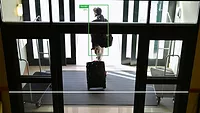How containerization bolsters video surveillance security

Video management systems (VMS) are the foundational application upon which security systems are ultimately built.
However, yesterday’s video management solutions are not ideally suited to meet the evolving risks that companies face. In addition to emerging security issues, such as active shooters and employee theft, cybersecurity is also critical for security teams to consider. The days of using a legacy video system to address modern day issues are quickly coming to an end.
As businesses transition to online environments and integrate information technology (IT) infrastructure into daily operations, they expand their cyberattack surface. When it comes to video surveillance, enterprise organizations may turn to containerization to secure video management systems.
Containerization is the packaging of software code with the operating system and dependencies required to run the code to create a single lightweight executable — dubbed a container — that runs on any infrastructure.
With traditional application development methods, code is developed in a specific computing environment, which, when installed, often results in bugs and errors. Containerization addresses this issue by bundling the application code with the configuration files, libraries and dependencies required. This single “container” stands alone and can run on any platform or cloud.
Containerized VMS solutions have all the prerequisites pre-configured and installed for functionality and do not require additional frameworks or database software. Because these systems do not have separate server requirements, deployments necessitate less retrofitting and communication across enterprise servers.
Overall, there are added layers of security inherent to using containers. The isolation of application containers prevents malicious attacks from affecting other containers or the host operating system. Additionally, security permissions can block unwanted components from entering containers or limit communications with unnecessary or unsecure resources.
Looking for a reprint of this article?
From high-res PDFs to custom plaques, order your copy today!








